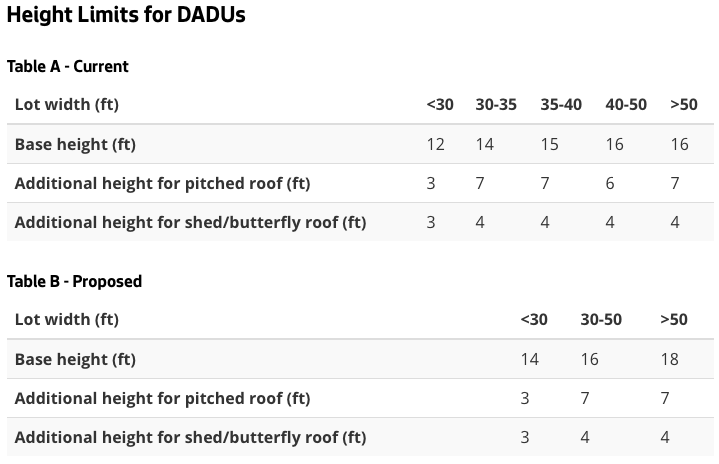If you were beginning to think backyard cottages were going to end up on the legislative agenda backburner, think again. Councilmember Mike O’Brien has formally unveiled his legislation to remove barriers from building backyard cottages in Seattle. During the review of backyard cottage housing, O’Brien and staff from the Office of Planning and Community Development conducted extensive public outreach to get feedback on issues like requirements for off-street parking, owner occupancy, height limits, and maximum square footage of units.
Known more formally as Detached Accessory Dwelling Units (DADUs), the City has permitted them on a widespread basis since 2010 and has experienced very low interest in development due to regulatory requirements. In total, 221 individual DADUs have been built. The City estimates that some 4,000 DADUs could be built if property owners of just 5% of eligible lots decided to pursue development of these units.
For the wonks out there, Councilmember O’Brien put together a helpful side-by-side comparison of existing code versus proposed regulatory changes:
Summary of Proposed Changes
| # | Policy Area | How It Is Today | Proposed Change |
|---|---|---|---|
| 1 | Attached Accessory Dwelling Unit (ADU) and Detached ADU (DADU) on the same lot | A lot with or proposed for a single-family dwelling may have no more than one accessory dwelling unit. | Allow a property to have both an ADU and DADU within the existing building envelope:
|
| 2 | Off-street parking requirement | One off-street parking space is required for the accessory dwelling unit, unless located in an urban center or urban village. | Remove requirement for off-street parking:
|
| 3 | Owner-occupancy requirement | An owner must occupy either the principal dwelling unit or the accessory dwelling unit. | Require owner-occupancy for 1 year, then requirement expires:
|
| 4 | Minimum lot size for DADUs | The current minimum lot size for a site with a DADU is 4,000 square feet. | Reduce the minimum lot size for a site with a DADU to 3,200 square feet:
|
| 5 | Maximum square footage of a DADU | The maximum gross floor area of a DADU is 800 square feet including any garage and storage areas. The maximum gross floor area of an ADU is 1,000 square feet. | Increase the maximum gross floor area of a DADU to 1,000 square feet; exclude garage and storage areas:
|
| 6 | Rear yard coverage limit | A maximum of 40% of a rear yard may be covered by accessory structures and any portion of the main house. This limit is in addition to the overall lot coverage limit for a single-family lot. | Increase rear yard coverage to 60% for one-story DADUs:
|
| 7 | Location of entries | DADU entrances cannot face the nearest side or rear lot line unless that lot line abuts an alley or other public right-of-way. | Allow DADU entrances on any façade, provided it is 10 feet from the lot line if located on the façades facing nearest side or rear lot line (unless abutting right-of-way):
|
| 8 | Height limit | The maximum height limit depends on the width of the lot; on wider lots, a taller DADU is permitted (see Table A below). | Increase maximum height by 1-2 feet and simplify code (See Table B below):
|
| 9 | Roof features | Exceptions for roof features for a accessory units are not permitted. | Allow exceptions from height limit for projections (e.g., dormers) that add interior space:
|

Councilmember Mike O’Brien’s backyard cottage legislation should be introduced to the Council soon for further consideration.
Stephen is a professional urban planner in Puget Sound with a passion for sustainable, livable, and diverse cities. He is especially interested in how policies, regulations, and programs can promote positive outcomes for communities. With stints in great cities like Bellingham and Cork, Stephen currently lives in Seattle. He primarily covers land use and transportation issues and has been with The Urbanist since 2014.



